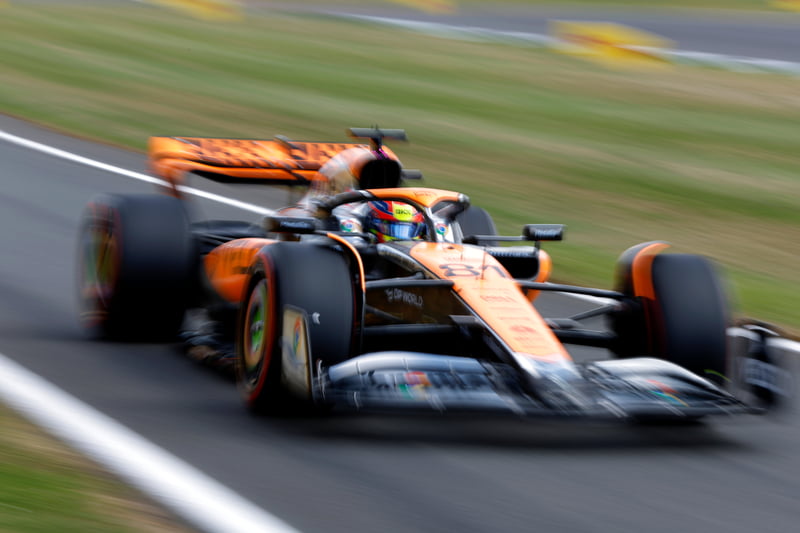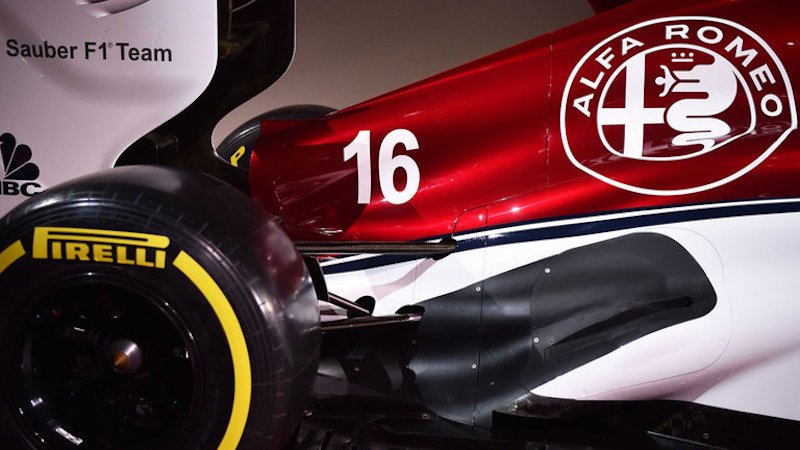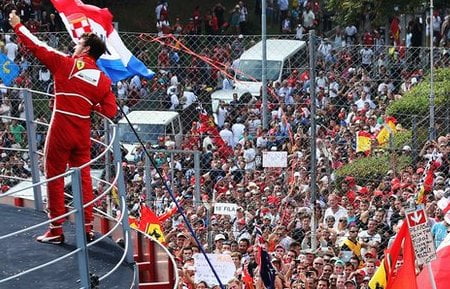2023 Hungarian Grand Prix
In his section ‘F1 data prediction‘, automotive engineer Ashwin Issac analyses data from previous races that present characteristics similar to the Hungaroring in Hungary to explain why McLaren could cement their place among the top tier teams.
Preface for F1 data prediction for Hungary
This week the premier open-wheel championship will race around the Hungaroring in Hungary.
This traditional, old-school circuit is tight and twisty, and narrow for the current generation of cars making it very difficult to overtake, it doesn’t help that there is only one very significant heavy braking zone.
That means qualifying becomes a priority to teams unless the undercut or overcut proves to be very influential or the weather and safety car plays a part.
The track layout with high and medium-speed corners and short straights encourages the teams to add all the downforce they can muster.
Here’s the layout of the circuit:
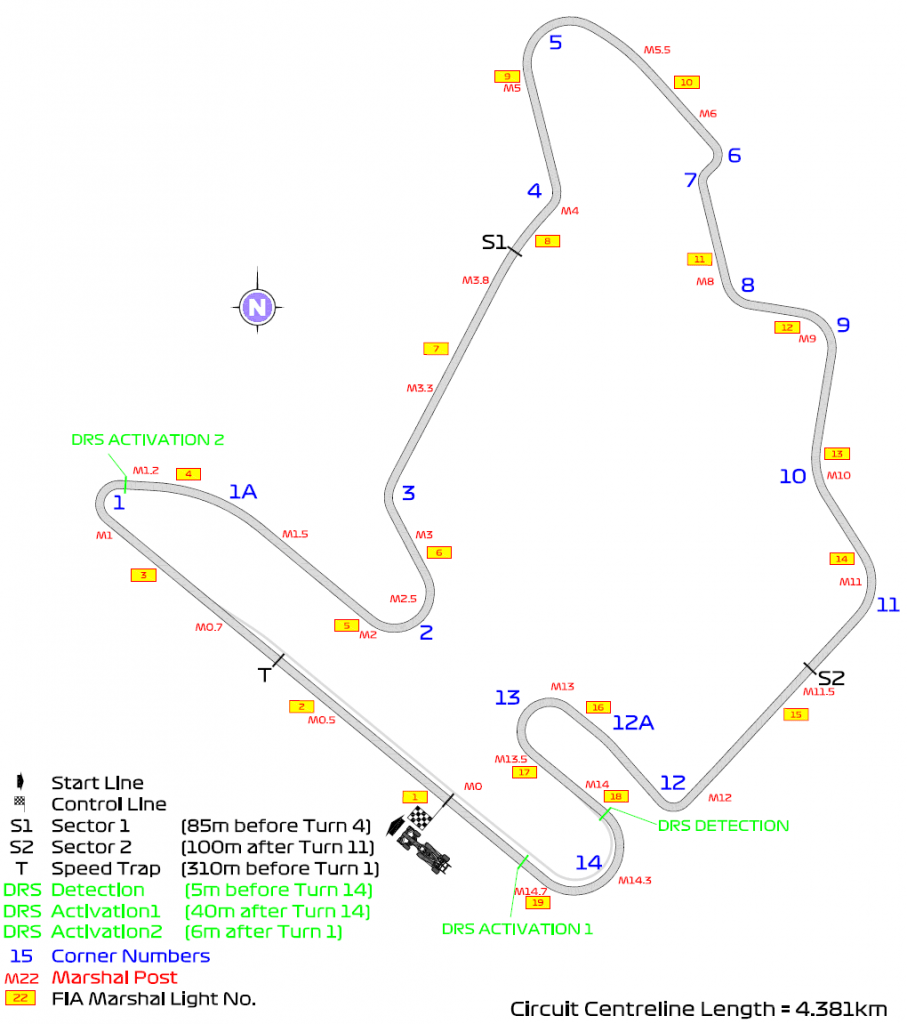
With the recent developments involving McLaren, apart from the pole position, it has become increasingly difficult to predict the classification order for the race. This is an enjoyable problem to have, with the nature of the circuit in mind let’s ponder on which team might have the edge on Saturday.
Prognosis for F1 data prediction for Hungary
For the comparisons, data with similar variables are selected for a viable analysis. For instance, the fastest sectors by a team and not individual drivers are considered for the qualifying examination.
To make an equitable assessment of the current hierarchy among the top teams, only the races from the Spanish GP onwards will be considered for this analysis.
The top teams defined by this blog consisted of Red Bull, Ferrari, Mercedes, and Aston Martin but McLaren has made a strong case to be in the mix.
2023 Spanish GP
The circuit in Catalunya is another high downforce demanding track and some of the corners spread across its sectors have similar characteristics to the one in Hungary.
Here’s a column chart depicting the performance of each team against the fastest team:
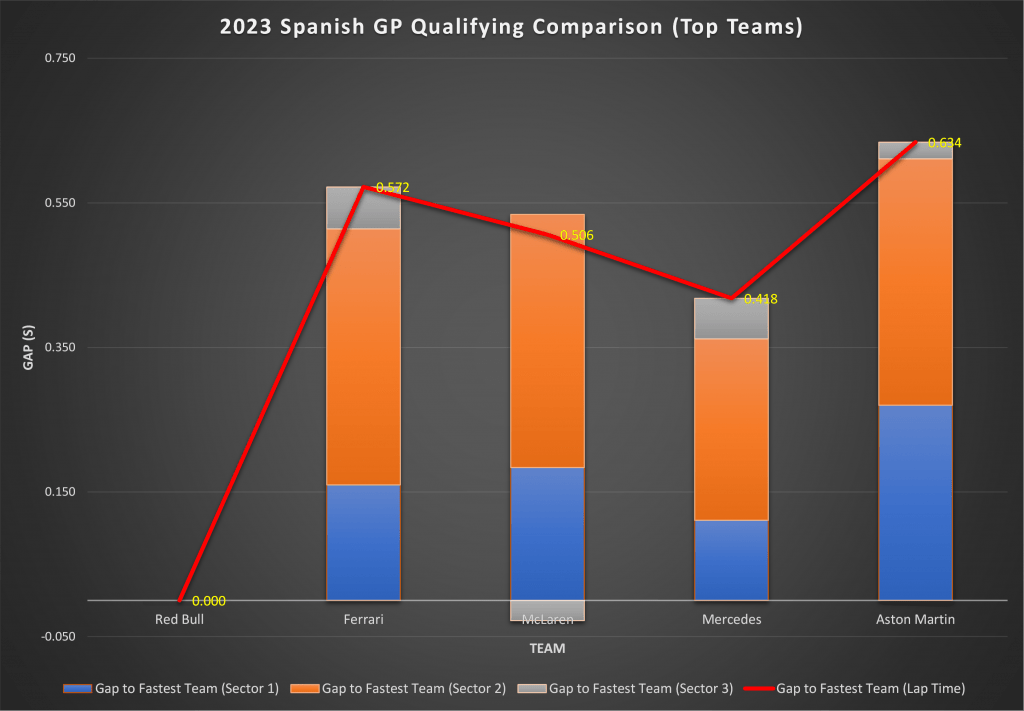
- In tricky yet dry conditions, the Red Bull in the hands of Max Verstappen was the quickest by a substantial margin.
- Many drivers found it difficult to group together their fastest sectors but when the fastest sectors of the Mercedes teammates were clubbed together they were the second fastest team.
- It was close between the rest but surprisingly the older iteration of the McLaren was the third fastest car.
Here’s how the advantage is distributed on the mini-sector map:
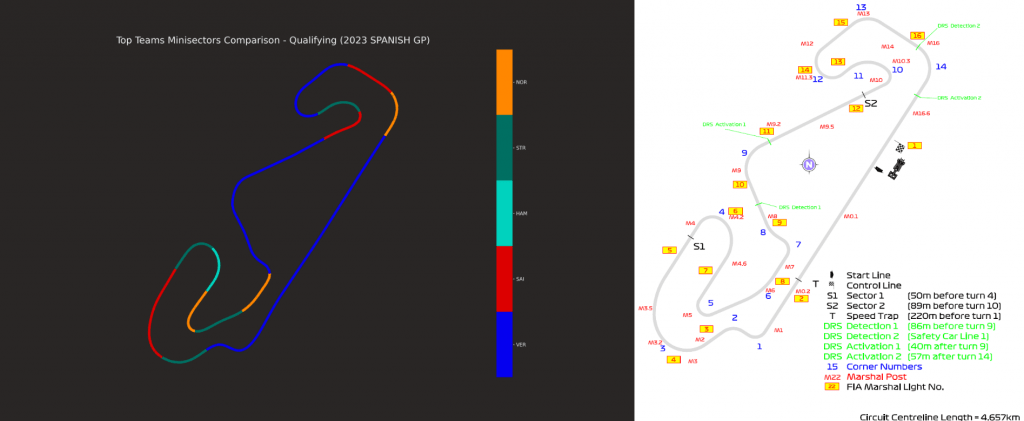
2023 Austrian GP
The Austrian GP is the first place where witnessed the newly upgraded McLaren. The second and third sectors of this track are where good downforce gives great times and the performance in these sectors could give us a glimpse into how the teams would fare in Hungary.
Let’s take a look at how the teams performed in the column chart below:
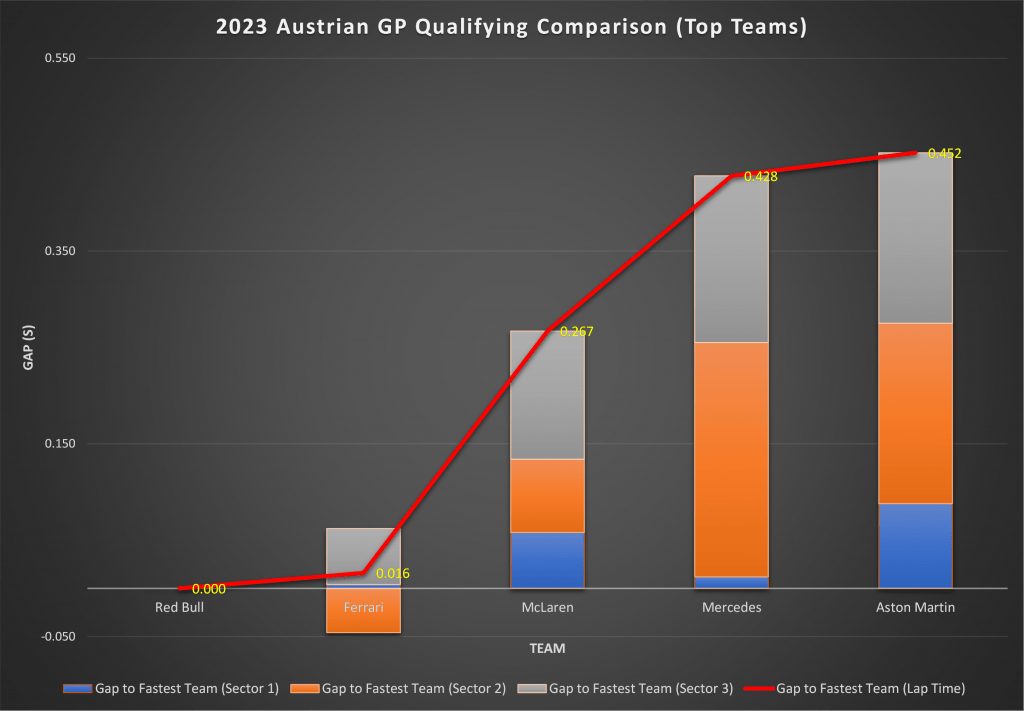
- There was nothing to pick between the Ferrari and the Red Bull, with Ferrari being the fastest car in sector 2.
- McLaren was the third-fastest team with deficits in all three sectors.
- It was close between Mercedes and Aston Martin but their shortcomings varied at different parts of the track. The Aston in a continuing trend lacked straight-line speed and Mercedes were slower in the second sector where the track led to some medium-speed corners.
The mini-sector chart below shows the advantage of each team at different parts of the circuit:
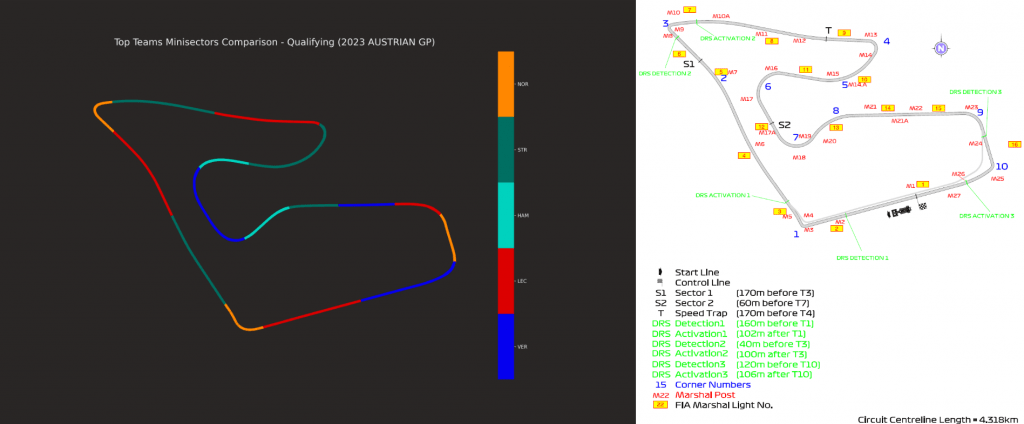
2023 British GP
Though the majority of the Silverstone track is different in characteristics from the Hungaroring, there are a few corners in sectors 1 and 2 that could act as a good gauge of performance.
The column chart below details the performance deficits of the lead team:
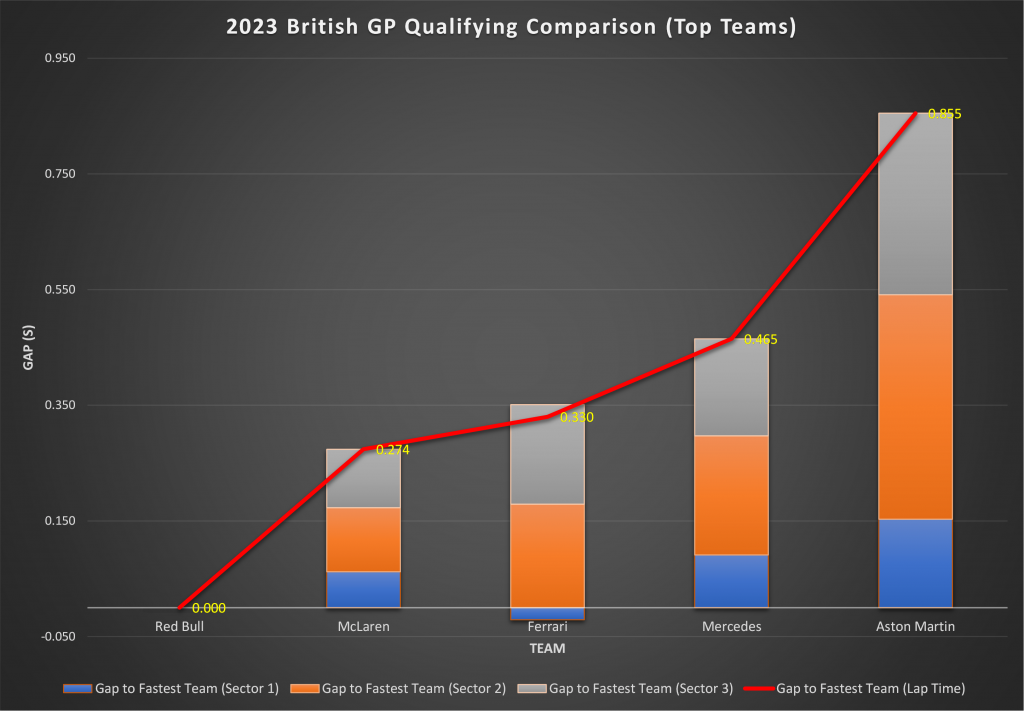
- Red Bull held a distinct advantage over the rest of the teams.
- McLaren was surprisingly behind them when they didn’t seem to make any impressions in the practice sessions.
- Ferrari couldn’t capitalize on the pace that they showed in practice. They even were the fastest in sector 1.
- Aston Martin was the slowest with an uncharacteristic shortfall.
The mini-sector map below gives us a clear picture of where the team made their times:
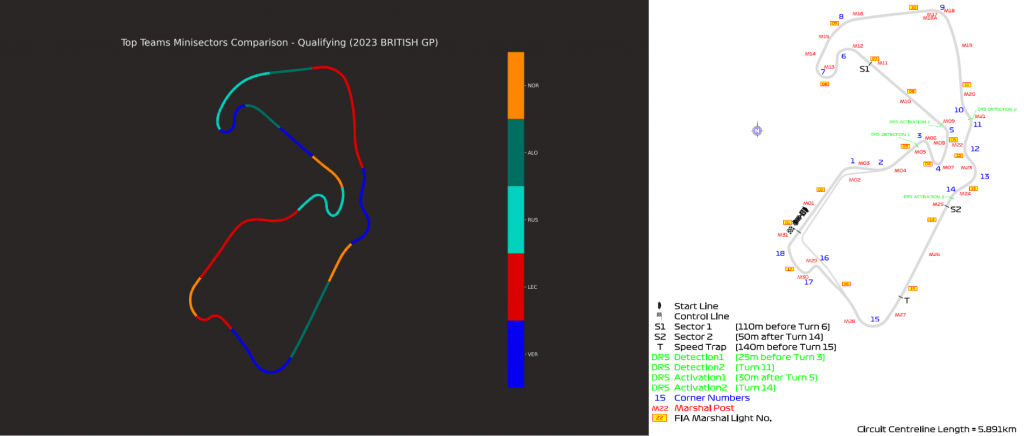
Conclusion from my F1 data prediction for Hungary
The common theme to all the qualifying sessions above was that the track temperatures were lower than it was in the practice sessions due to cloud cover or a drying track. Another common factor is that all these tracks are downforce hungry, though not at the same levels.
In such conditions and track characteristics, the McLaren car shines bright despite the upgrade. The Hungarian track will also provide such characteristics, the shorter straights may also benefit them and to top it all off there is a threat of rain, which will keep the track temperatures on the lower side.
Based on the analysis above the top five teams could be bookended by Red Bull and Aston Martin. No prices to guess who will be on the top. It will be close between the remaining teams with Ferrari on the backfoot because of the lack of straights and their dislike of low track temperatures.
There are some upgrades rumored to be brought by Mercedes and Red Bull which could again change things, at least for the silver arrows. Alpine have been on the back heels of this group but haven’t had ideal weekends, they could also be contenders for a place in the top 10.
The Hungarian GP awaits us with open arms, the expansion of the top-tier Formula 1 teams has added an extra element of flavor to this exciting hot pot.
